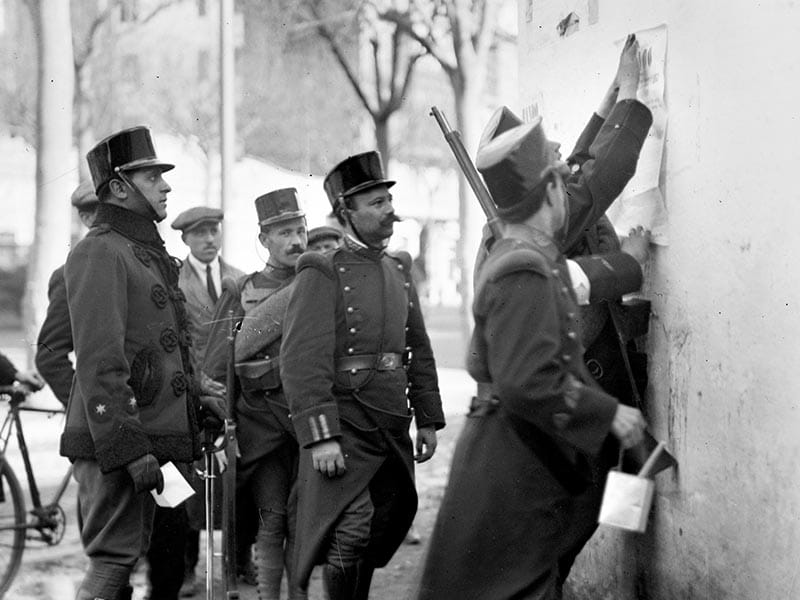CNT - National Confederation of Labor
Manel Aisa discusses the twilight of the CNT’s power in Barcelona.
I’ve come to the conclusion that this began when Aurelio Fernandez could no longer continue as Secretary General of the Internal Security Board. could no longer continue as Secretary General of the Internal Security Board. But when he leaves this post, controlling the city and the frontier, that’s when Rodriguez Sala and the PSUC have the chance to launch the coup. That is, to put a stop to workers’ control of the city, The workers control Telefonica, the phone company, because it’s the city’s communication center. So whoever controlled Telefonica could monitor any political or governmental conversation. At all times, the workers knew what was being discussed and the politicians wanted that eliminated. They wanted their own people in there, which wasn’t the people from the CNT. And this is how this particular conflict begins. There was a lot of gunplay and the CNT, despite possessing the strength at the time, decided, through García Oliver and Federica Montseny, who were in the government back then, decided to put an end to it all. Not to escalate. And this decision not to escalate ushers in the downfall of the working class movement. Interest in continuing the fight dwindled, as they saw it as having less and less to do with them. And this what’s behind the events of May 1937. The workers see that it’s not worth fighting for a government that is becoming more and more bourgeoisie. And this is when the degradation of the working-class movement and the CNT, strong as it still was at the time, gets underway. Many POUM members lives were saved because the CNT still had their backs… but Andreu Nin disappeared…Whatever was of no interest to Russia began disappearing.
Teresa Abelló discusses various chapters in the CNT’s history. Solidaritat Obrera was, initially, an effort, or project, to reorganize the Catalan labor community in Barcelona, in the wake of difficulties for the labor community in the late 19th century. It had been practically destroyed, the result of a dramatic event, known as the Montjuic Process. It affected the labor movement profoundly, causing it to splinter. And by 1907, those labor communities that had been able to keep it together, followed the example set by another socio-political organization created a few months prior– known as Solidaritat Catalana–and formed the Solidaritat Obrera, a movement centered on bringing all the labor communities together to form a single union. This is the CNT’s embryo, due to the fact that most labor communities had anarcho-syndicalist leanings. In 1910, the CNT was founded in Barcelona. The following year, it expanded throughout Spain. And its organized in the classic, labor movement tradition, within an anarcho-syndicalist framework. Committees are organized. Trade federations are organized. These trade federations organize locally, at the local and regional level. Simply, a federal, pyramid-shaped, model of organization. Both local and regional committees are important. The CNT is the most popular union in Barcelona, though the UGT is very important, probably more important than people tend to admit. Why did it overtook the UGT? Why do we always talk about the CNT’s great importance? First, we mustn’t forget that the UGT was established in Catalunya. It had its headquarters in Catalunya for many years. And it will never disappear. I want to make that clear. So why is CNT, the National Confederation of Labor, more important. It’s difficult to explain as there are so many factors in play. The most logical explanation, surely, is that Catalan society in general– as it’s the Catalan working-class that nourishes the CNT– has always felt outside the state. It has not been a participant in state affairs. There has never been a tradition of participation in state government, and obviously, there are many reasons for that. The UGT is a state-wide union, and its organization is very centralist. To some extent, this positions it at a distance from that implicit tradition. Of course, the whole Barcelona labor movement is the labor movement belonging to the CNT. Although the CNT is anarchist, a republican-federal culture feeds it. Federal republicanism stands at a distance, not participating in affairs of the central state. And on top of that, this anarchism emanating from the CNT’s inner workings is an even more decentralized view, and that gets into the psyche of Catalan society. But the UGT is important, too. I want that to be clear. The Canadenca strike was the important strike across Spain up to that time, which was 1919. It’s so important because it occurs a few months after the CNT, which has been struggling during the World War I years, has taken a great leap forward. In other words, the CNT has addressed its organizational shortcomings, and in 1918, a few months before the Canadenca strike, has held a reformational Congress announcing a new organizational model, one that differs slightly from the previous one. The CNT had been organized by profession, and in 1918, at the Sants’ Congress, it puts into practice a new organizational model that stems from the company. All workers at a company, dictated by majority, will belong to the same union branch. In other words, the typist will be a member of the metal union if the company’s focus is metal. The point of this is to increase the strength of striking workers in the event of a strike at the company. Company solidarity over solidarity by profession. The neighborhood committees existed within the CNT’s organizational model. The CNT is a union with a long tradition. Created in 1910, it goes through many phases. I don’t know what year to call its last, maybe 1936 or a bit later, but it goes through many changes. A very important feature in the CNT’s history is the constant defeat. There are successful moments, but all are followed by periods of great repression. This reality is the reason that neighborhood committees are created. In other words, what is the role of these committees? To let the union do its work. They are committees that exist to defend the union itself. These are small groups whose purpose it is to make sure the CNT has what it needs to function. So, at certain times, its actions are calm, while at others, they’re more aggressive. The role of women in the CNT was little different from what it was everywhere else. There’s often a certain mystique in the discussion of women of the CNT, but the reality is that their role was exactly the same as everywhere else. The CNT was a reflection of society, and as with everything, there are stages. If we look at the CNT’s history, we see, in theory, much said about the liberation of women. But, in practice… For example, while all these strikes are happening, the working woman’s greatest enemies were members of her own union. They were frequently accused of being habitual strike-breakers. The reality is that women had to work and bring food home to the children.
Several Catalunya Barcelona interview subjects discussed the storied history of the CNT.My grandfather belonged to the CNT, but not to any libertarian Ateneu. Did he tell you anything about his CNT membership? Well, he was a CNT member but not renowned, not anyone especially well-known. He had his job, and everyone had to belong to a trade union, and in Barcelona CNT, anarchism, had great momentum, a lot of strength. So, it’s logical that he’d have been in the CNT. I’m happier he was with the CNT than with some other group. The greatest proponent of anarcho- syndicalism in Catalunya is the CNT. There’s a moment, prior to the Civil War, when it boasts 900,000 members. It’s the largest labor union. Many more than the UGT, which was founded, I believe, in 1888. But it never had the CNT’s strength, which, initially, was pacifist anarchism. Eventually it becomes more confrontational. The CNT, or National Confederation of Labor, or confederació nacional del trebal, was a labor union, the most prevalent in Catalunya. Before the civil war, it was the most important union. It brought the working class together. They were anarchs-syndicalist, with no interest in participating in the politic process. The labor movement in Catalunya was very unique. Maybe more anarchistic than in other places, but not much more. And it was useful because anarcho-Syndicalism, the CNT, later the FAI, wielded great influence when the Republic was on the horizon. As such, they played an important role, politically, during the war. At the start of the 20th Century, anarchists came to Barcelona. They imparted their way of thinking at Ateneus. They were many small labor groups spearheading socio-cultural initiatives, comparative analysis, etc… This yielded results, and the CNT was created in 1911, a very big labor union that, in many ways, controlled politics in Catalunya. Because the people in the workers movement, mainly the CNT, were ready to face the military uprising. In Plaça de Catalunya at Telefònica, on Les Rambles, at Drassanes, at a monastery on Diagonal where it intersects with Beilén. There was fighting throughout the city. The CNT held vigil all night. They’d gathered trucks to confiscate weapons, then armed people in front of Júpiter Stadium in Poblenou. When my father was 16, he volunteered and entered the war, affiliated with CNT. So you could suppose he had anarchist ideas or that in a way agreed with them. In this factory, there was a huge conflict between the UGT and the CNT. My father had to throw out the bombs that they were throwing at each other. Beginning in the 1910s, the workers movement in Catalunya was controlled completely by anarchists. Here, Marxism never took off. The common ideologic option for organized labor was libertarianism. This was in the form of the CNT, The National Confederation of Labor. The great libertarian union. Within the union, there were always two different currents: Anarchism, and syndicalism. The radical and the moderate. With the arrival of the 2nd republic, in 1931, internal tensions worsened. After fighting over control of some committees, the anarchist current heads the union. This sector doesn’t want the republican regime to have time to grow strong. Because now, there are some in power without any governing experience. They seek to leverage that insecurity, that weakness and take down the regime. The political regime. Capitalism. Private property. Everything. So, in early ’32, the CNT introduces an insurrectionary tactic, what the anarchists call “revolutionary gymnastics.” What does it mean? It means, “No.” “We know already that our first, second, and third attempt will not succeed.” It’s like training, needing to bulk up the organization and its workers. To train them, little by little, in the fight against the army and police. Look, that’s something I asked my father repeatedly, He was an idealist, and spoke to me as one. He defined the CNT and FAI as aggressive, totalitarian, incapable of dialogue and, at times, violent. But they were on the side of idealism, and were good people. That’s all he every told me. The first law legalizing abortion was made by CNT leader Federica Montseny. She was also Minister of Health for a while. If we remember that naturism, nudism, vegetarianism, environmentalism, etc., are born of anarchist ideology, we see it’s still with us today. However, as an organized social movement.. ..in 1978, there was the Scala Case, which made it impossible for the CNT to adapt to the late 20th and 21st century. The trade unions, because there were others –the old UGT, other smaller unions, and, of course, the anarchist trade union, CNT– were very important in these years. Have they told me anything? Not long ago, I found a membership card for the CNT from 1934-1935 that belonged to my grandmother. From 1934 or 1936, but before the war. She was very young, and she kept it all those years. The first thing she did when Franco died, was to update the CNT membership card. So in it, she appears as an old lady. And I believe they forgot their past. People from the CNT ended up police in the city. The same with the Falangists. This happened a lot in small towns. Better to be a local policeman than to pick chickpeas under the sun, right? It became clear that it was all a setup orchestrated by Spain’s secret service. They sought to discredit and keep the CNT from continuing on. That’s what happened in the Scala case, which was a police operation to repress the libertarian movement. Immediately, the CNT was accused, and not only accused, arrested on the same day. Everyone but the informant.
Teresa Abelló discusses Largo Caballero’s Mixed Juries, and how the CNT viewed them.
The Mixed Juries that Largo Caballero attempts to establish are there to resolve conflict. In theory, it’s the bringing together of employers, workers, and administrative representatives Now it’s these representatives of the administration that the CNT has a problem with. The CNT insists that conflict resolution is between owners and workers, alone. And this is a very important distinction between the UGT and CNT. The UGT is a union that has an association with the state, but the CNT does not.
Teresa Abelló discusses the historic Canadenca strike in Barcelona that brought the CNT to the world’s attention.In that context, the Canadenca, the company that provided electricity to Barcelona, was a very important company with capital investment from Canada. That’s why we know ‘Barcelona Traction, Light and Power’ is known as La Canadenca. It had many subsidiaries. One was ‘Riegos y Fuerzas del Ebro’ with its headquarters in Camarasa, a town in Pallars. In that office there was a strike over fired workers, and the new union model was now in effect. It’s a complete success, because the conflict that originated in a single office with just a few workers leads to a company-wide strike, all of Canadenca. Of course, Canadenca provides electricity to Barcelona, so the lights are out in Barcelona. So every company that requires electricity must stop working. From that moment on, another form of solidarity grows. Solidarity within the labor world. Tram workers are on strike because they’re not running, etc. etc. There’s solidarity on the part of the workers at the company’s print office. Of course, it’s an immense company. The workers are strong because the new organizational model works. It is the great test of strength between union and employer. The strike’s size made it very clear how strong the union was So for one, concessions must be made. They earn the 8-hour workday. Salaries must increase. But this is also the start of a new relationship with the Employers Union. Therefore, this ushers in a new era in the way bosses and unions relate to one another. It will be characterized by great clashes.
Numerous Catalunya Barcelona interview subjects discuss Barcelona’s proclivity for strike actions.I’m all for a giant general strike that makes Spains’s risk premium and Rajoy’s government tremble. And regarding my art… Yes, I remember going to protests and participating in strikes, and the protests during strikes. On October 4, 1934, a new government is announced in Madrid, one that’s even more right-wing. the Spanish worker parties, PSOE and communist party, order their members to go on a general revolutionary strike. September 1977. Gas station strike. The cause of the general strike of 1917 is very obvious. With World War I, businesses make a fortune, selling to France, England, even the Central Powers. Because they were at war, lacking in everything. What they called, Economic Operations. Robbing banks to finance the labor movement, strikes and things like that. There are also those among us who went into hiding, who were tired, who said, “Well, that’s enough. We’ll let it be. At least we have the right to demonstrate, to strike. Freedom of expression. No fear of being arrested.” We were very tired. Know what I mean?
Teresa Abelló discusses the CNT labor strikes that take place constantly during the 2nd Spanish Republic.
During the entire period of the Republic, political and socio-labor confrontation is very intense. This is a point in time when freedom has arrived in the Spanish state, and there’s both a demand and need for great reform. Now this demand for reforms, which, in many cases, goes back a long time, obviously, are pursued doggedly, and they want it now. There’s no time. There can be no waiting. Politically, it’s very difficult. Reforms, of course, take time. The republican government is involved in every reform in every area across the entire state. It needs to move at its own pace, and the unions aren’t giving the government much rope, and on top of that, some sectors are hungry for direct confrontation. So the wave of strikes is constant, and here in Catalunya, the most important wave will be in 1932. There’s a declaration of a general strike in 1933, but that’s more important in Andalusia and other regions than Catalunya. Conflicts stemming from the actions of the CNT in Catalunya are less problematic. The year before, however, that’s when they undertake so many insurrectionary rebellions, in particular, throughout Baix Llobregat. The strike scene, throughout the republic, is always important, as I’ve said already. The person in charge of labor policy during the republic is, obviously, Labor Secretary, Francisco Largo Caballero. Francesco Largo Caballero stands at the highest position in the UGT, a very committed union member. I’d call him a union member first, a politician second. The fact that Largo Caballero is heading up policy ensures a clash with the CNT. This now is a fight between two very powerful unions with different visions for reform and social order. So the intent of this wave of strikes, from the beginning, is to show the strength of each union.
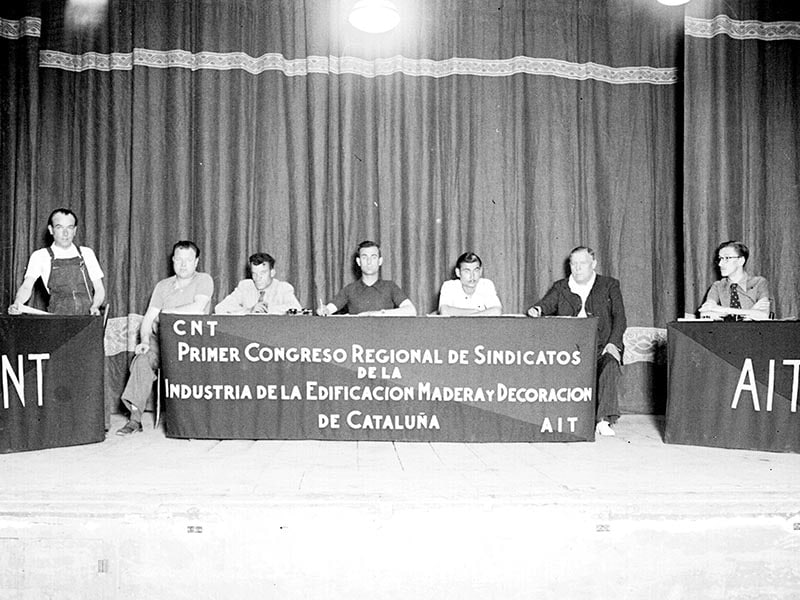
1937 – CNT FAI Building, Wood, and Decoration Trade Union
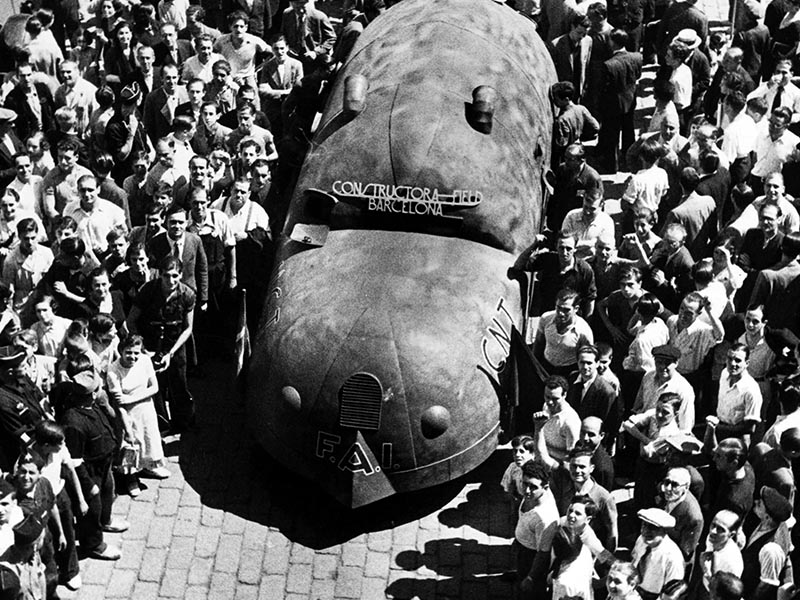
1936 – Armored truck brandishing CNT affiliation, heading to the front.
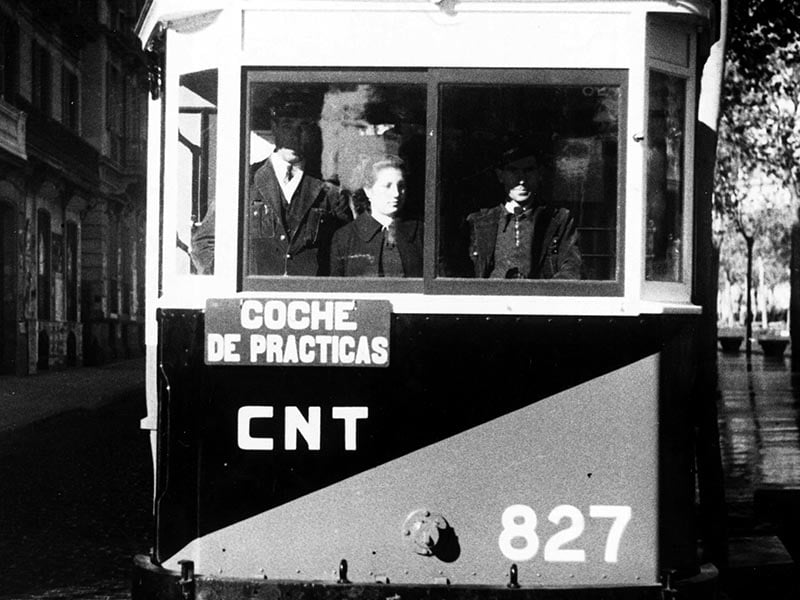
1936 – Woman training as tram operator with CNT union in Barcelona during Spanish Civil War.
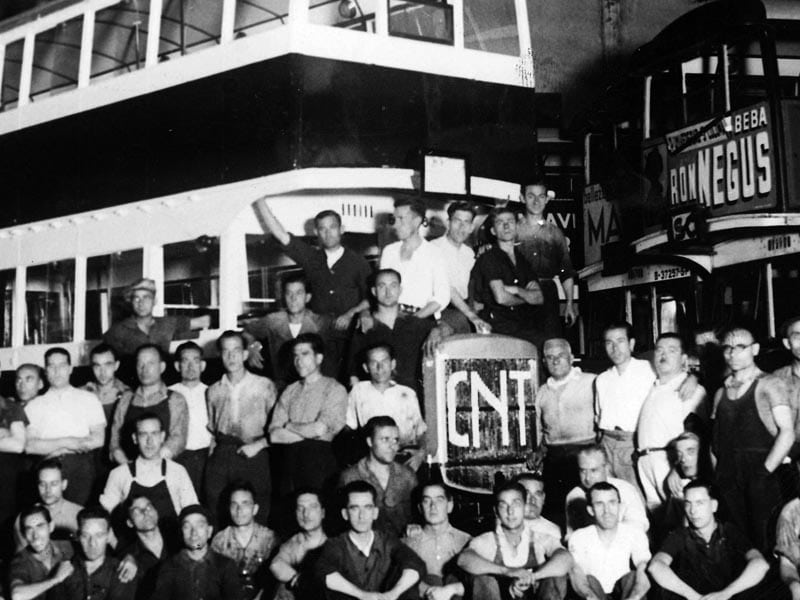
1936 – First bus created under collectivization by CNT members.
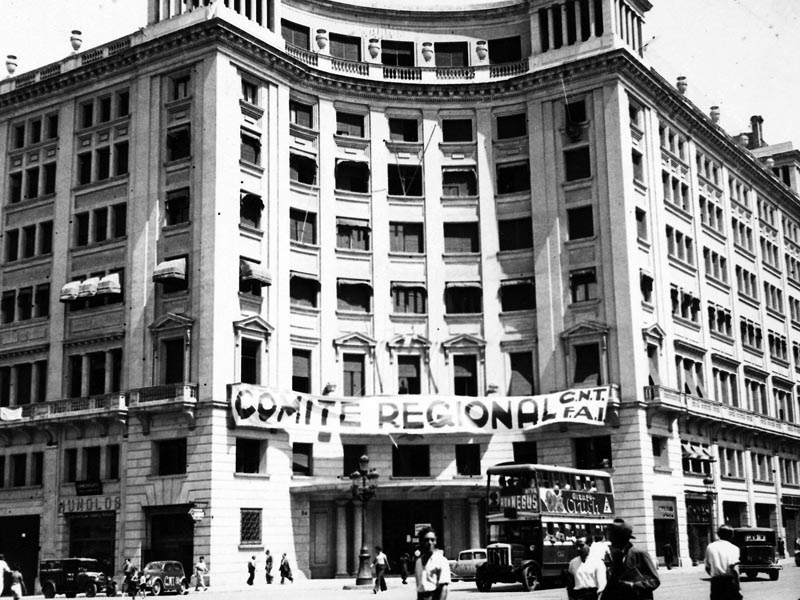
1936 – CNT Regional headquarters on Carrer Pau Claris.
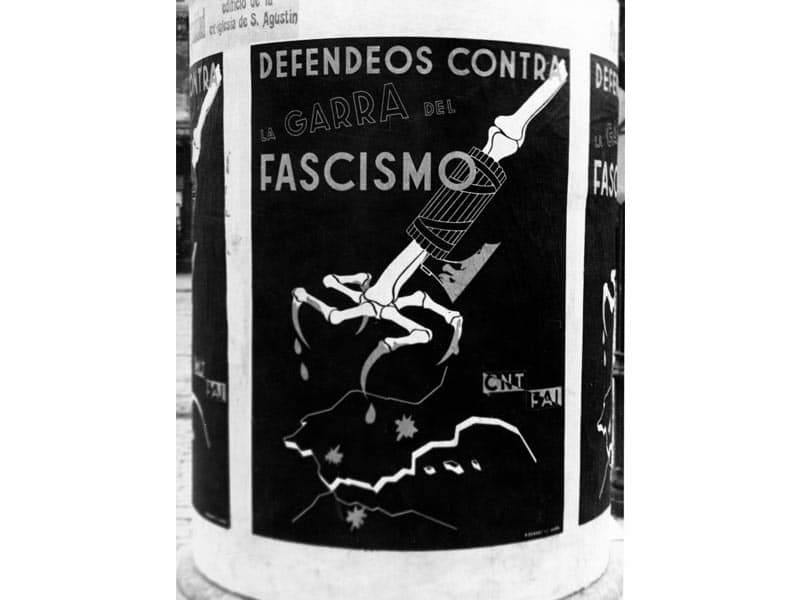
1936 – Anti-fascist poster created by the CNT.

1936 – CNT Regional Congress of Trade Unions at Teatre Olympia

1936 – CNT propaganda poster.
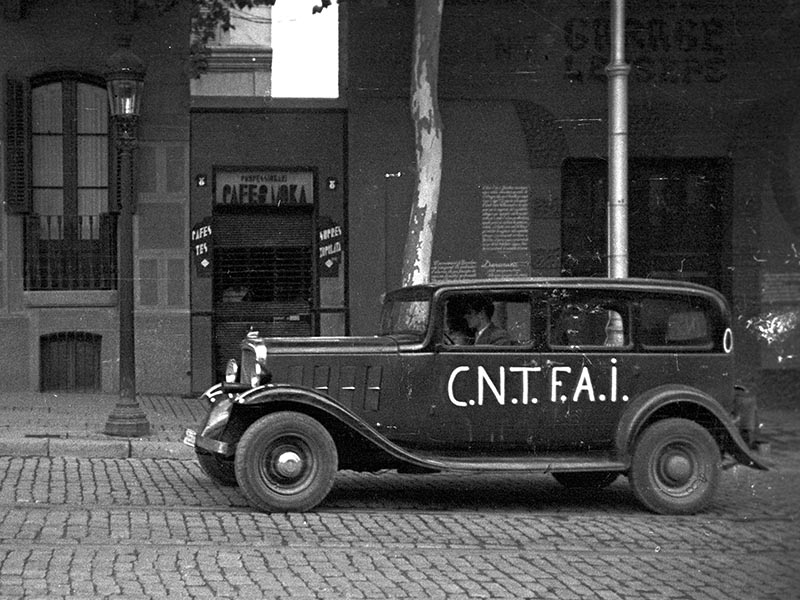
1937 – Autos operated by the CNT FAI.
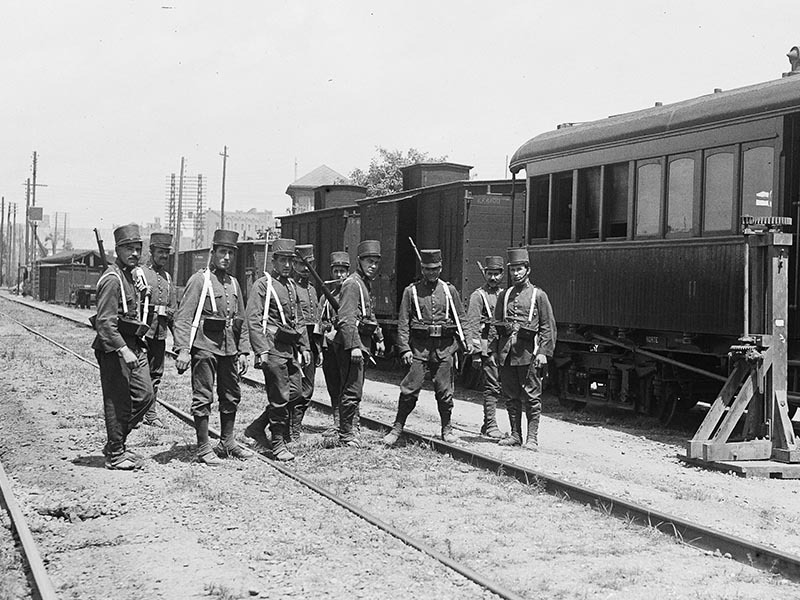
1917 – Trains taken into custody during the Companyia del Nord strike.
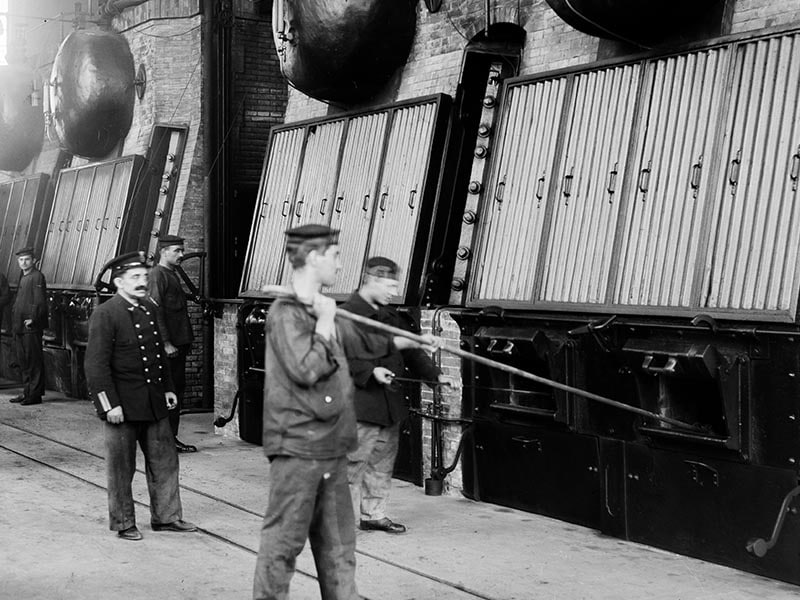
1919 – Workers from battleship Alfons XII operate machines at the Canadenca.
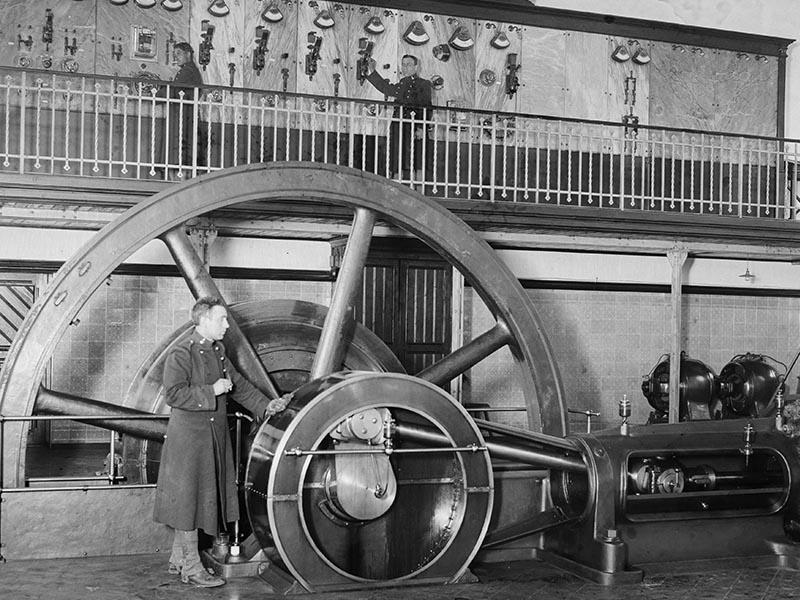
1937 – Autos operated by the CNT FAI.
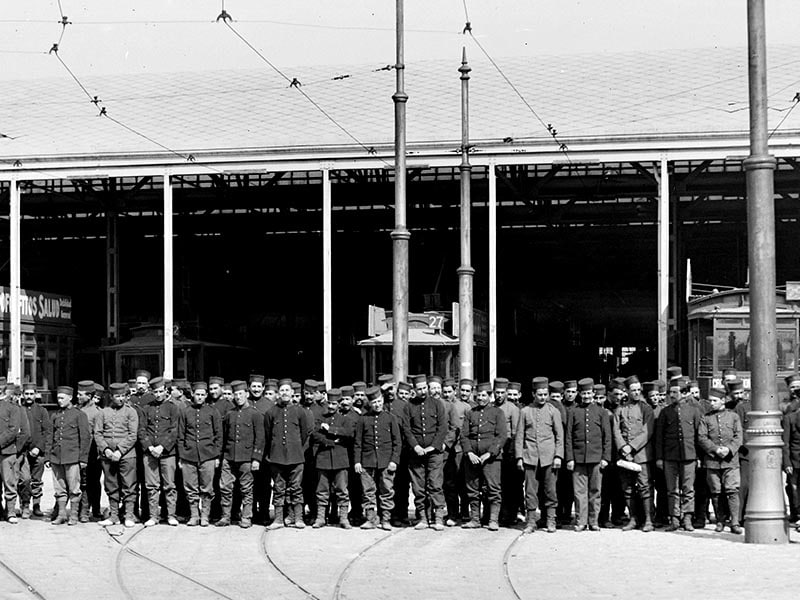
1919 – Troops on the street during the Canadenca Strike in Barcelona.
